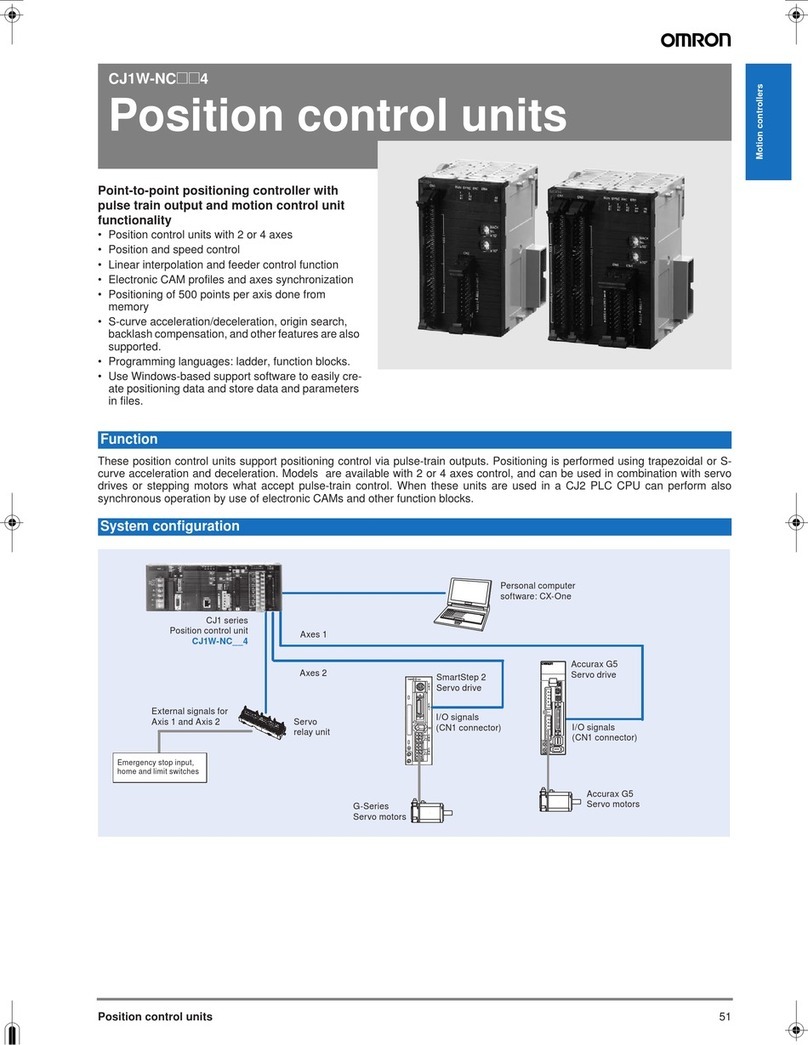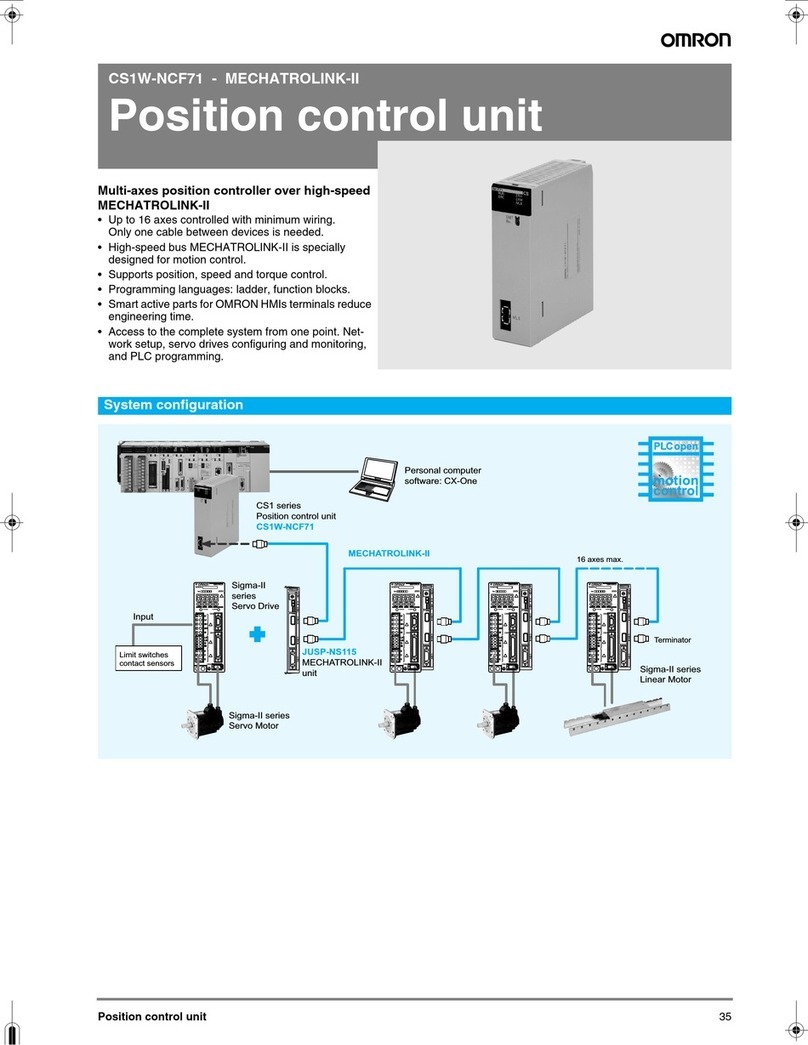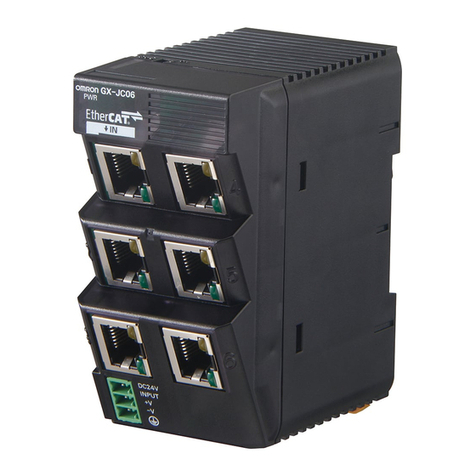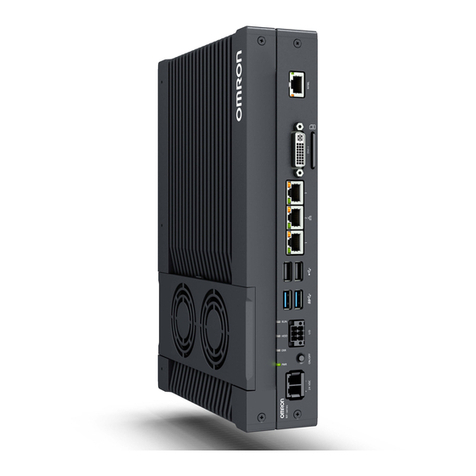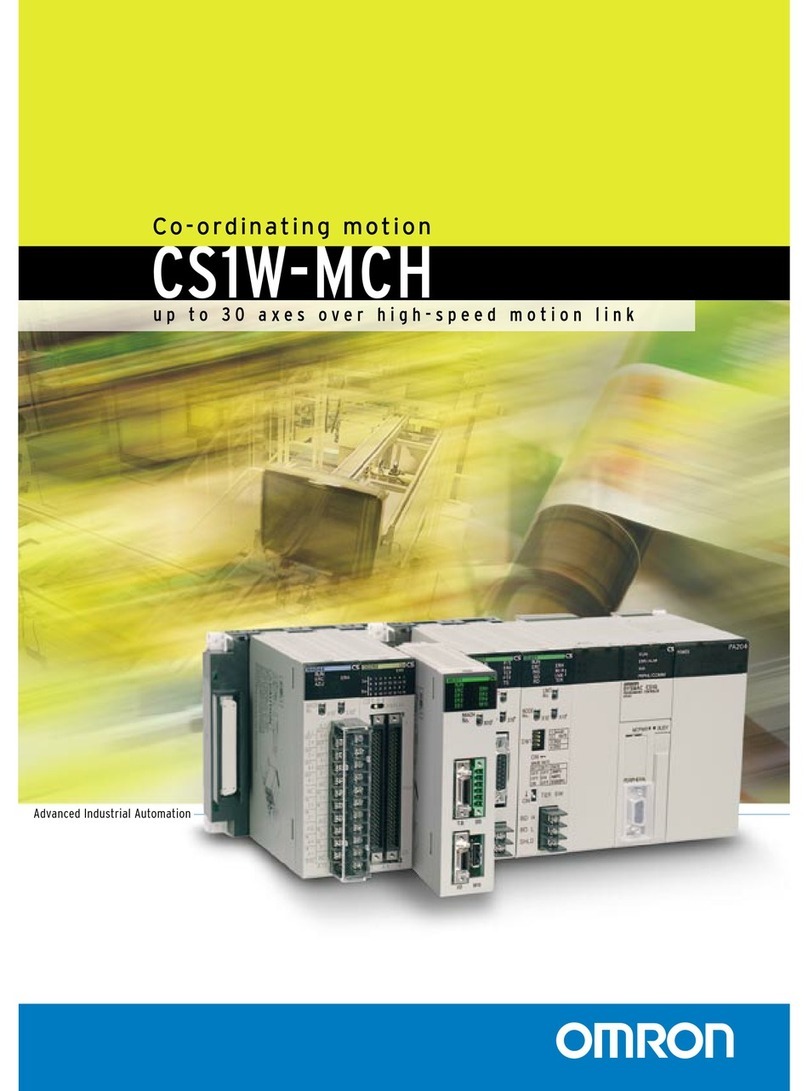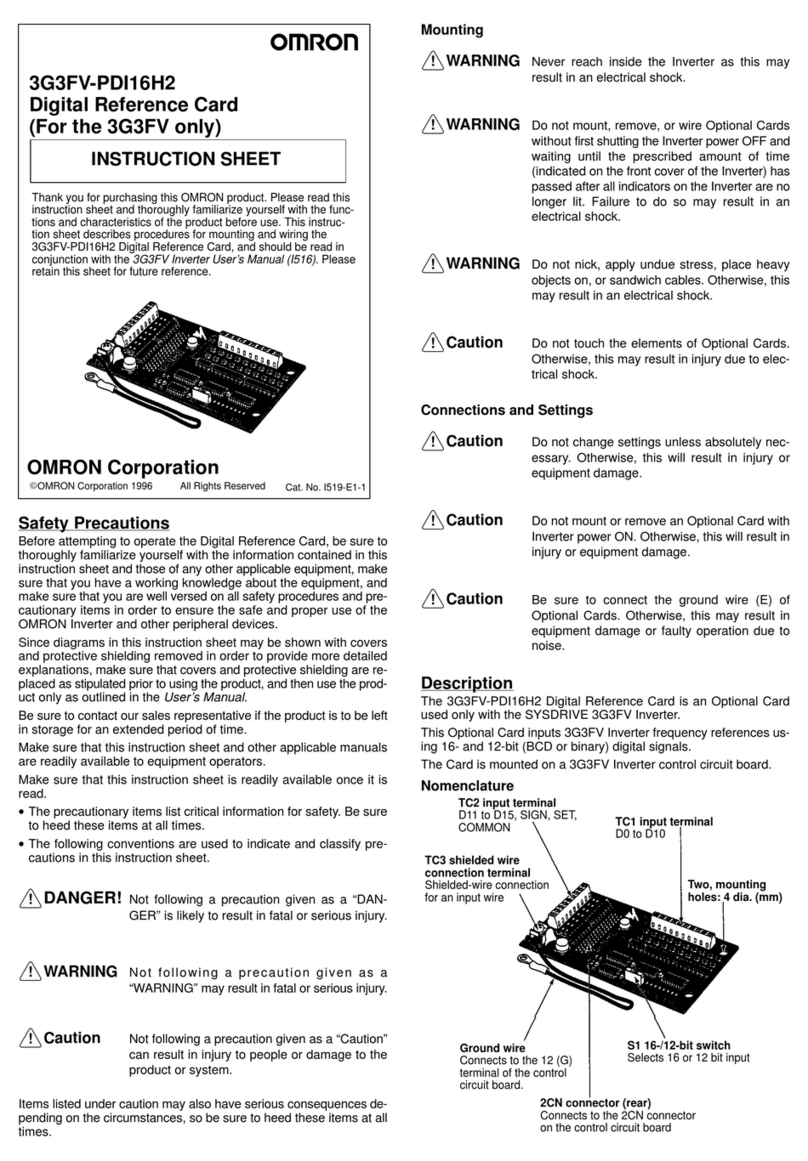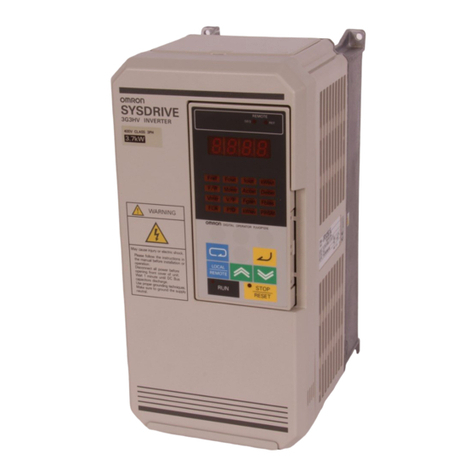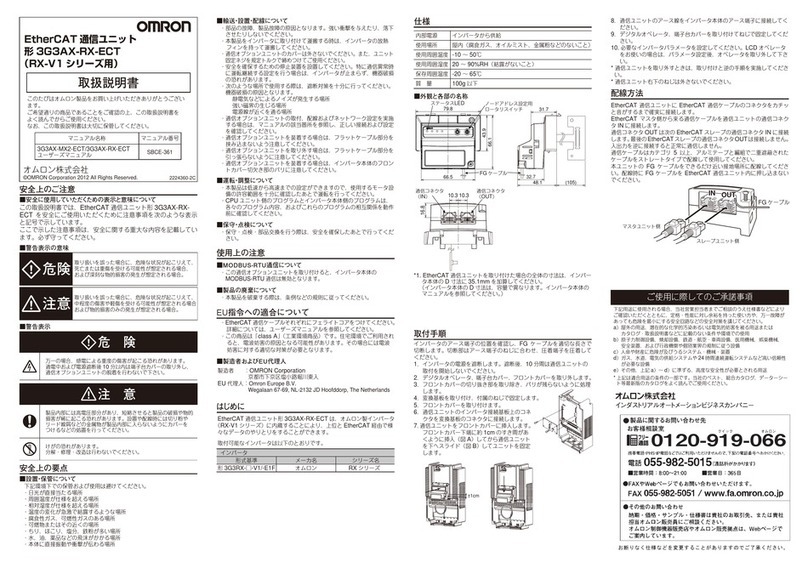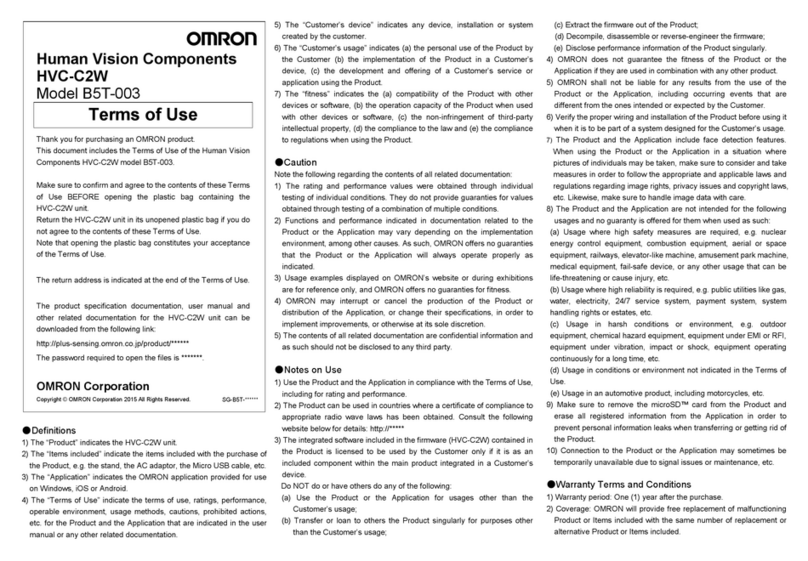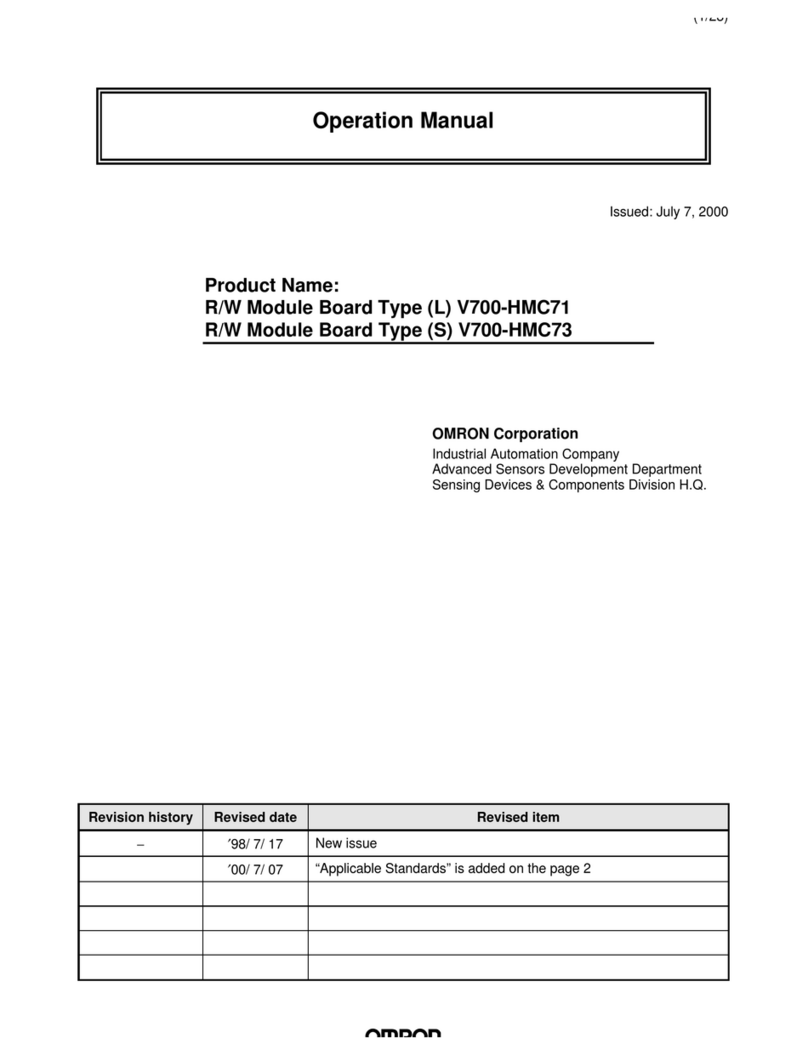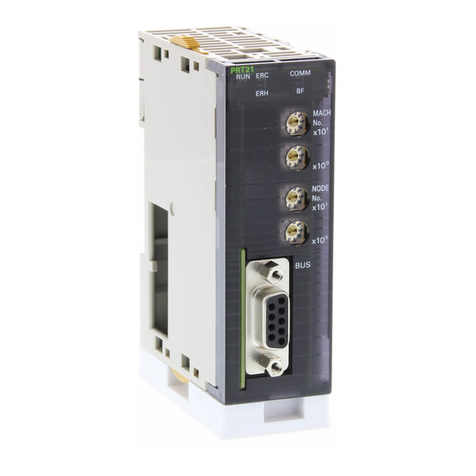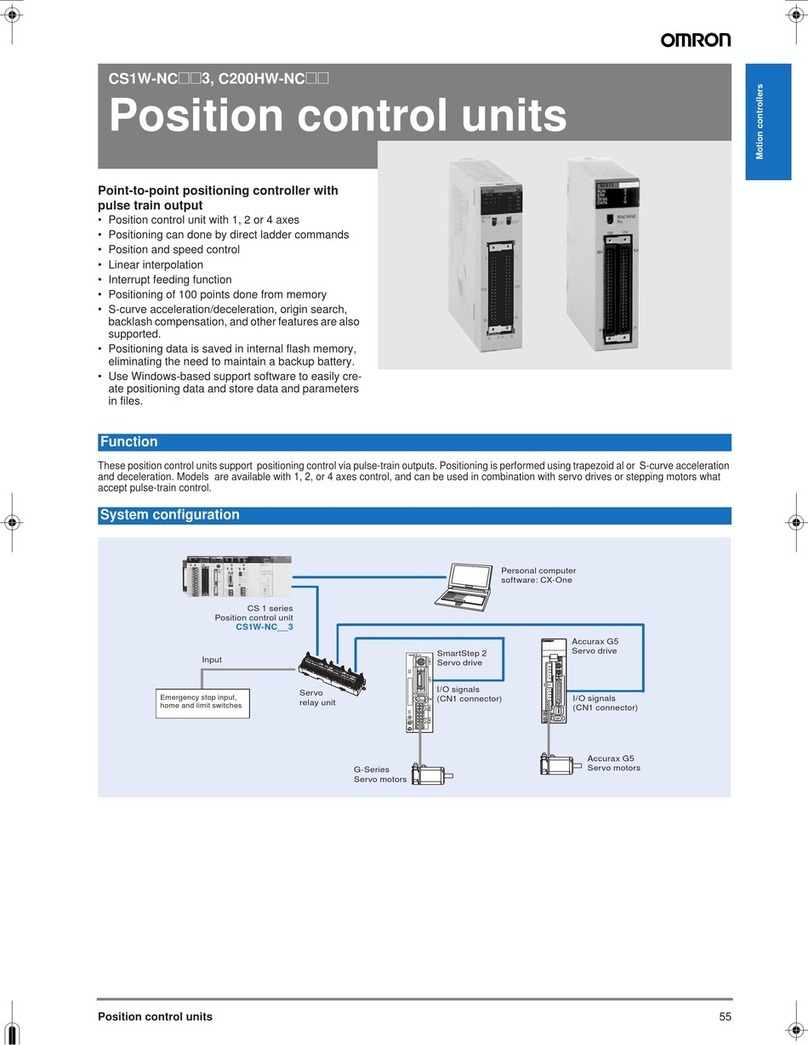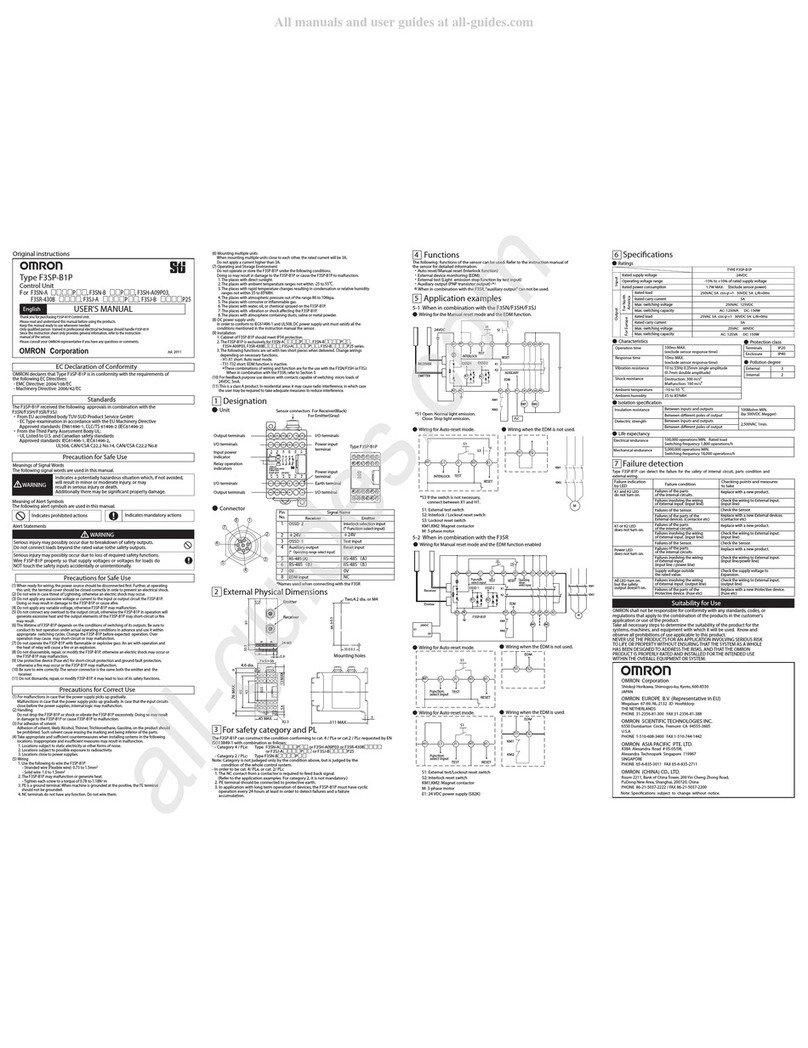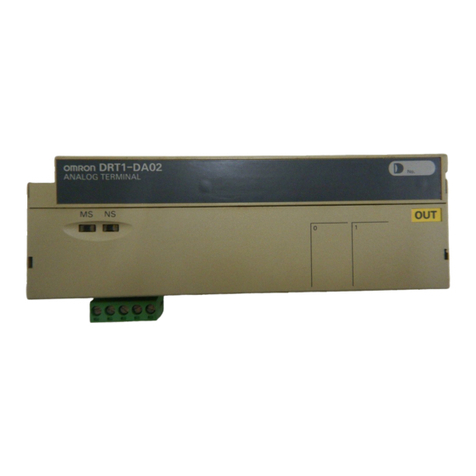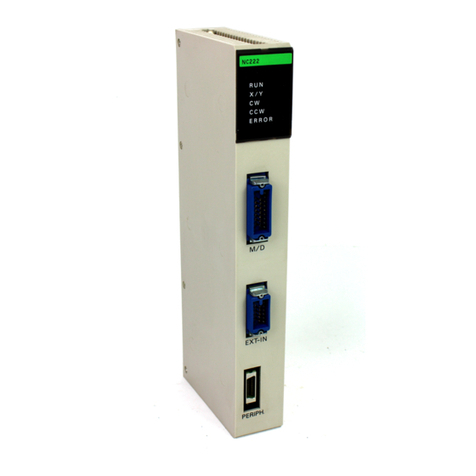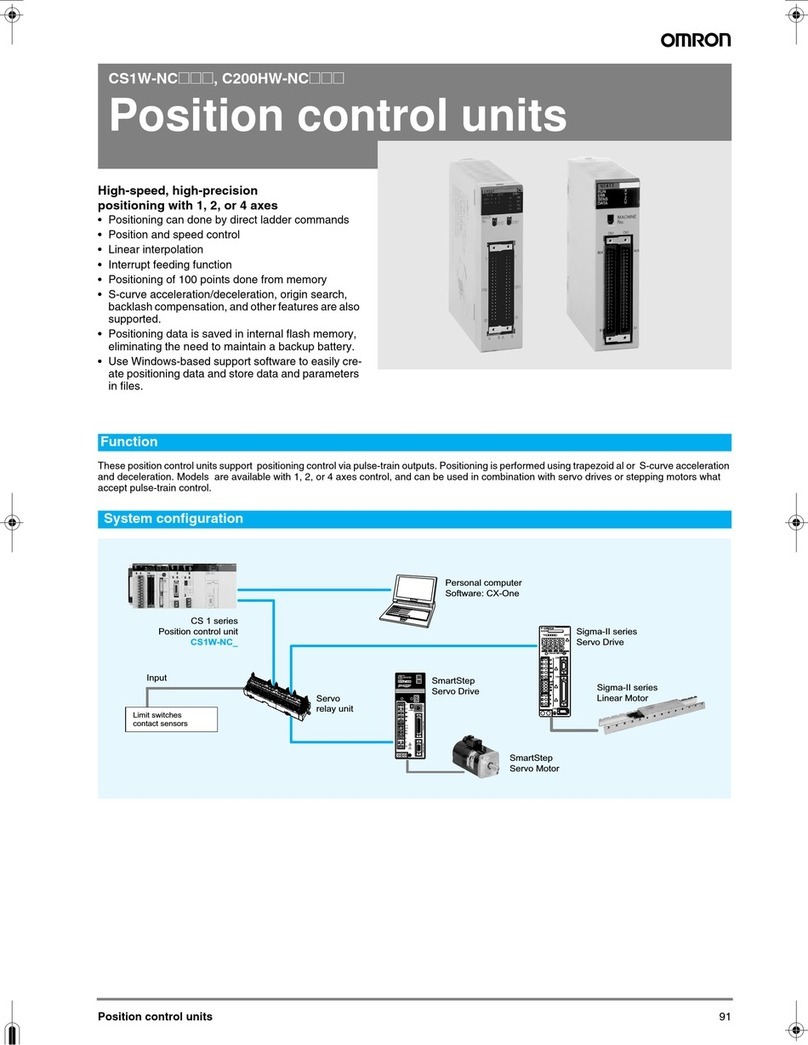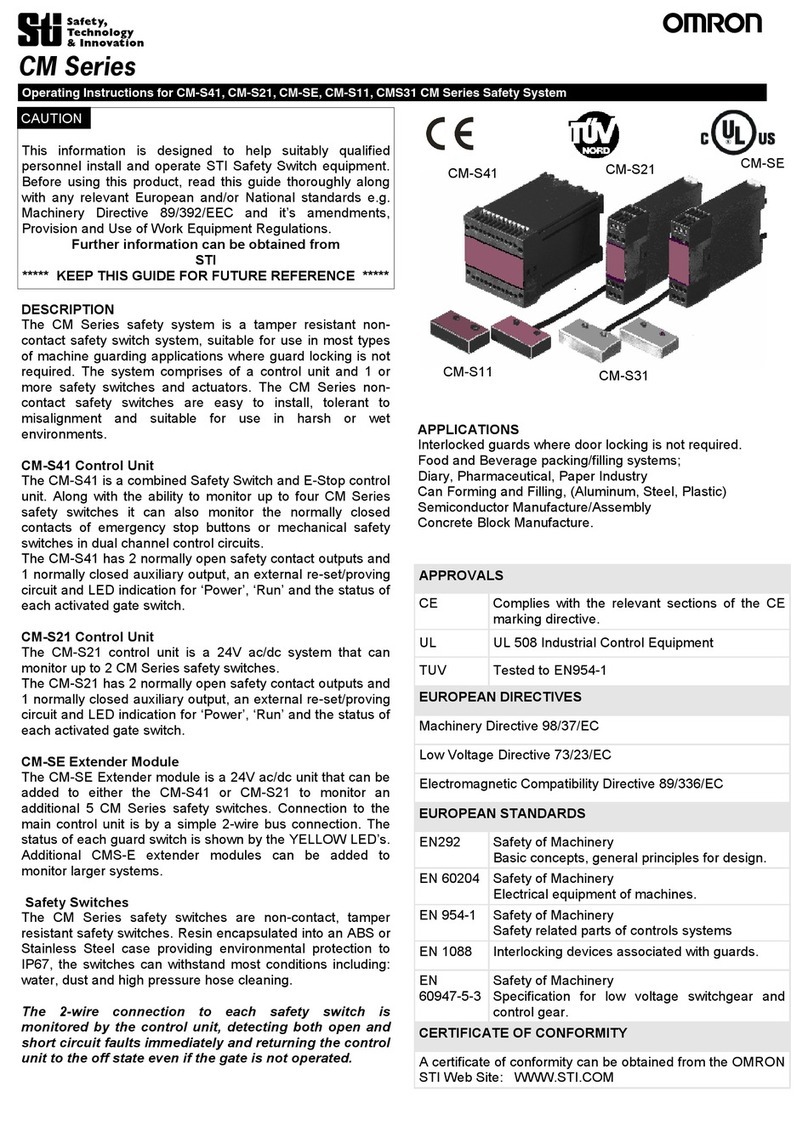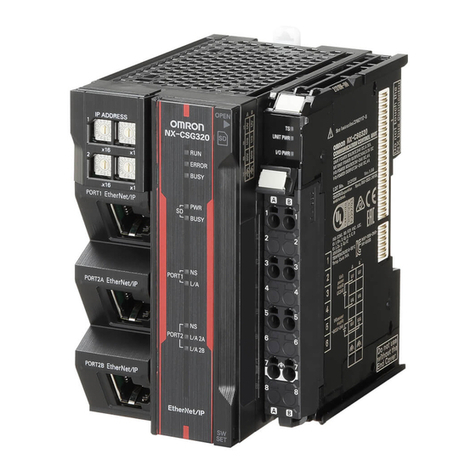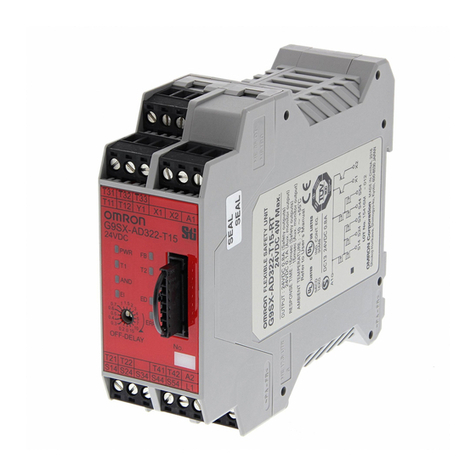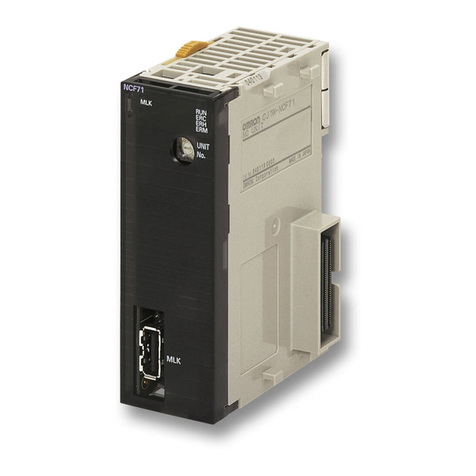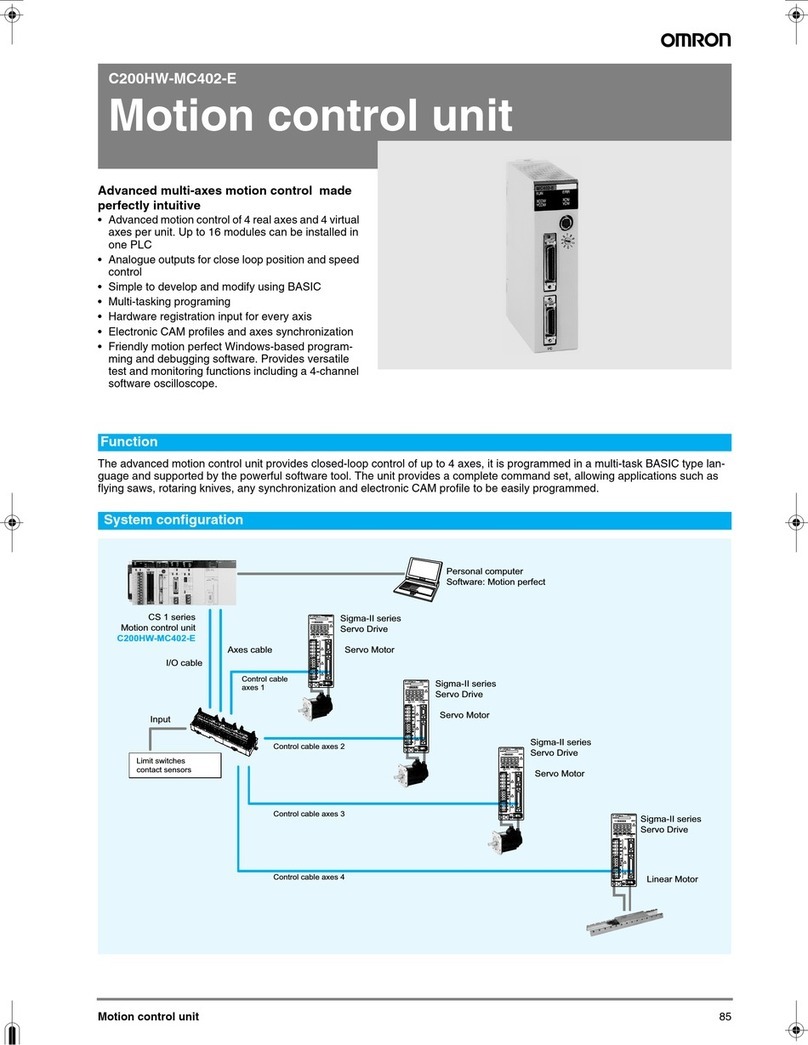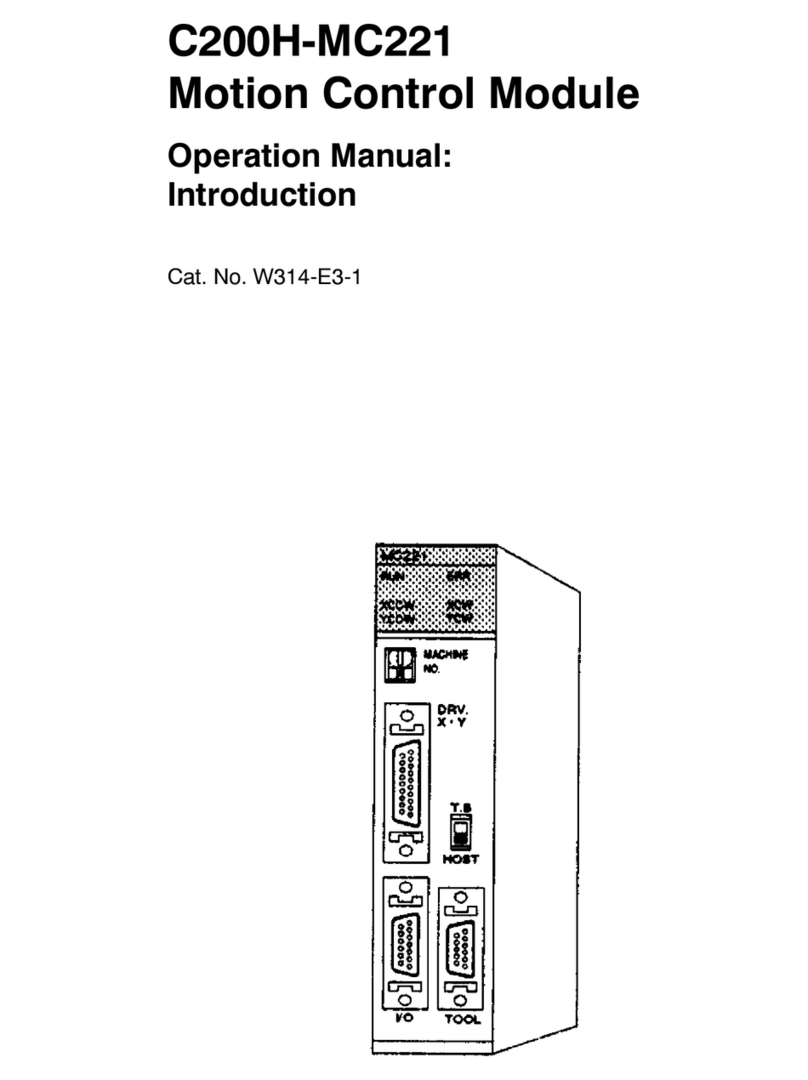
7
Precautions for Safe Use
EJ1 EtherCAT Slave Unit User’s Manual (H192)
• Connecting cables, wiring, or changing the configuration
• If you change the fail-soft operation setting, the output status when the error occurs may also change.
Confirm safety before you change the fail-soft operation setting.
• Confirm that the controlled system will not be adversely affected before you perform any of the fol-
lowing operations.
• Changing the operating mode of the CPU Unit (including changing the setting of the Operating
Mode at Startup)
• Changing the user program or settings
• Changing set values or present values
• Forced refreshing
• Dispose of the product according to local ordinances as they apply.
• Do not allow foreign matter to enter the openings in the Unit. Doing so may result in Unit burning,
electric shock, or failure.
• Before installing the Unit, do not remove the enclosed cover seal from the connector opening on the
left end of the Unit.
• You can connect up to 16 Units for one End Unit. However, you can connect only one Advanced Unit.
Do not connect more than 16 Units.
• You can connect up to 32 Basic Units with branch wiring. Do not connect more than 32 Basic Units.
Observe the following precautions for EtherCAT communications.
• Make sure that the communications distance, number of nodes connected, and method of connec-
tion for EtherCAT are within specifications.
Do not connect EtherCAT Coupler Units to EtherNet/IP, a standard in-house LAN, or other networks.
An overload may cause the network to fail or malfunction.
• Malfunctions or unexpected operation may occur for some combinations of EtherCAT revisions of the
master and slaves. If you disable the revision check in the network settings, check the slave revision
settings in the master and the actual slave revisions, and then make sure that functionality is compat-
ible in the manuals or other references. You can check the slave versions in the settings from the
Sysmac Studio and you can check the actual slave revisions from the Sysmac Studio or on slave
nameplates.
• After you transfer the user program, the CPU Unit is restarted and communications with the Ether-
CAT slaves are cut off. During that period, the slave outputs behave according to the slave settings.
The time that communications are cut off depends on the EtherCAT network configuration.
Before you transfer the user program, confirm that the system will not be adversely affected.
• EtherCAT communications are not always established immediately after the power supply is turned
ON. Use the system-defined variables in the user program to confirm that communications are estab-
lished before attempting control operations.
• If frames sent to EtherCAT slaves are lost due to noise or other causes, slave I/O data is not commu-
nicated, and the intended operation is sometimes not achieved. Perform the following processing if
noise countermeasures are necessary.
Program the _EC_InDataInvalid (Input Data Invalid), _EC_InData1Invalid (Input Data 1 Invalid), and
_EC_InData2Invalid (Input Data 2 Invalid) system-defined variables as interlock conditions in the
user program.
Set the PDO communications consecutive timeout detection count setting in the EtherCAT master to
at least 2.
Refer to the NJ/NX-series CPU Unit Built-in EtherCAT Port User’s Manual (Cat. No. W505) for
details.
• When an EtherCAT slave is disconnected, communications will stop and control of the outputs will be
lost not only for the disconnected slave, but for all slaves connected after it. Confirm that the system
will not be adversely affected before you disconnect a slave.
• If you disconnect the cable from an EtherCAT slave to disconnect it from the network, any current
communications frames may be lost. If frames are lost, slave I/O data is not communicated, and the
